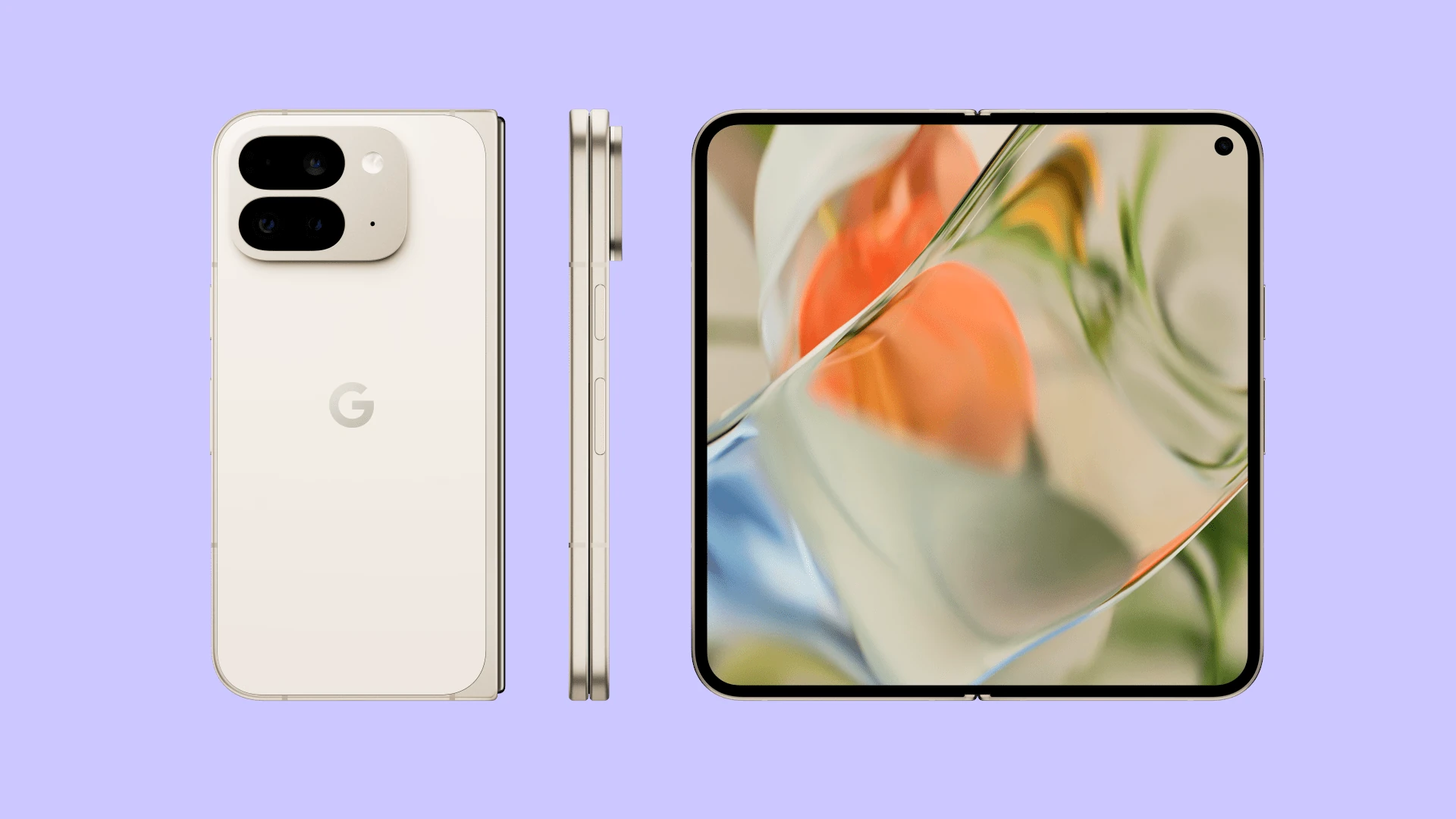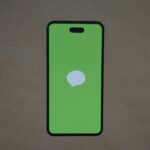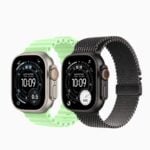Foldable phones have transformed the smartphone market by offering innovative designs and enhanced functionality. These devices combine the portability of a traditional smartphone with the larger screen space of a tablet. Major technology companies have released various models, each featuring distinct capabilities. The landscape of foldable phones is continuously evolving.
Manufacturers are addressing initial concerns about durability and refining their designs accordingly. The latest models showcase improved hinges, more resilient screens, and optimized software experiences. As technology progresses, foldable phones are becoming increasingly practical and appealing to a broader range of consumers.
Top Foldable Phones: 2025 Ranking
Foldable phones offer a unique blend of portability and expansive screen real estate. They provide a tablet-like experience in a pocket-friendly device. Let’s compare the top contenders in the foldable phone market: the Google Pixel 9 Pro Fold and Samsung’s Galaxy Z Fold6 and Z Flip6.
1. Google Pixel 9 Pro Fold

- Display: 7.6-inch foldable OLED display with 120Hz refresh rate.
- Processor: Google Tensor G3.
- Camera: Triple rear camera system (50MP main, 12MP ultrawide, 10MP telephoto).
- Software: Android 15 with Google’s signature clean interface.
- Special Features: Excellent camera performance, seamless software experience, durable hinge design.
2. Samsung Galaxy Z Fold6
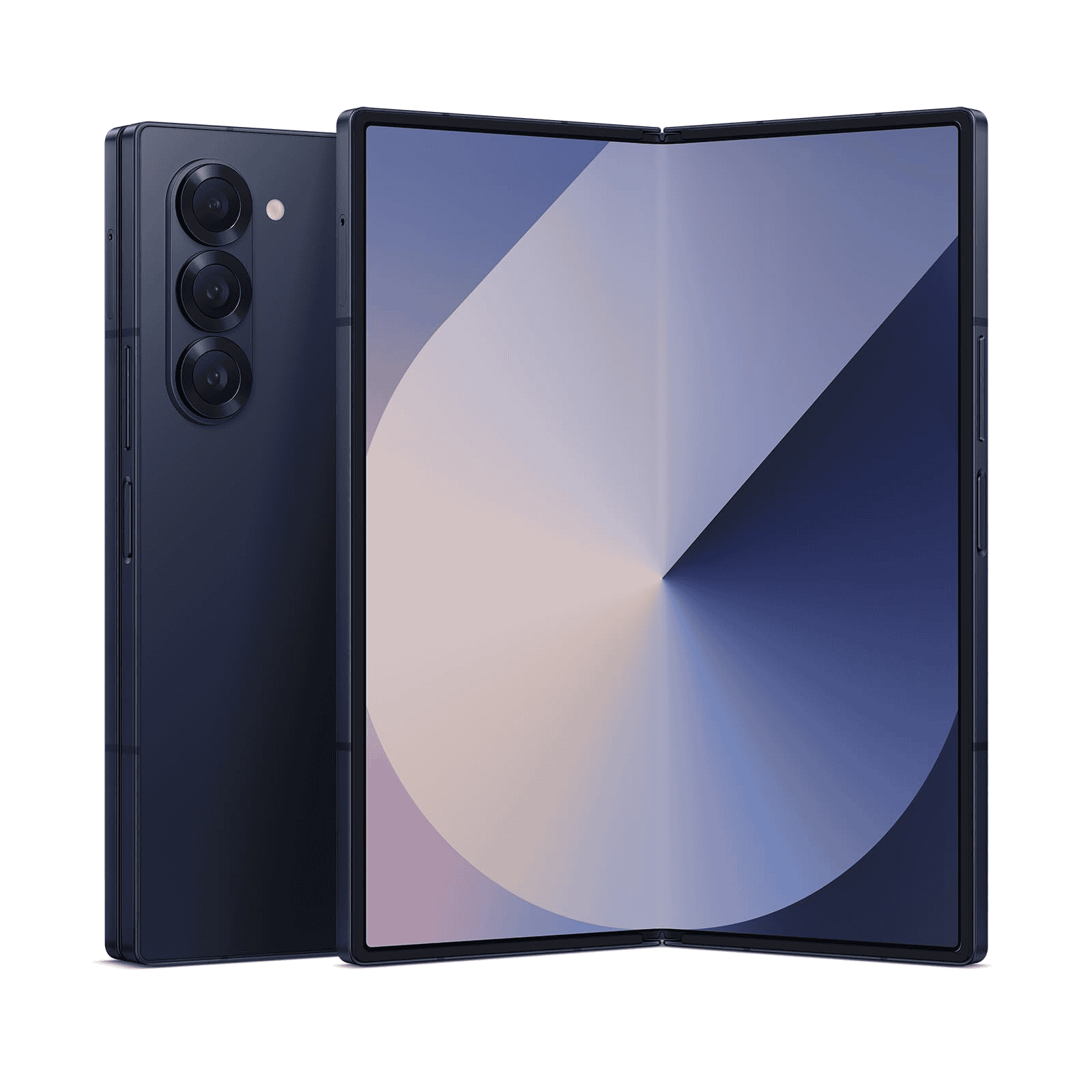
- Display: 7.6-inch foldable Dynamic AMOLED display with 120Hz refresh rate.
- Processor: Qualcomm Snapdragon 8 Gen 3.
- Camera: Triple rear camera system (50MP main, 12MP ultrawide, 10MP telephoto).
- Software: Android 15 with Samsung’s One UI.
- Special Features: S Pen support, multitasking capabilities, water resistance.
3. Samsung Galaxy Z Flip6
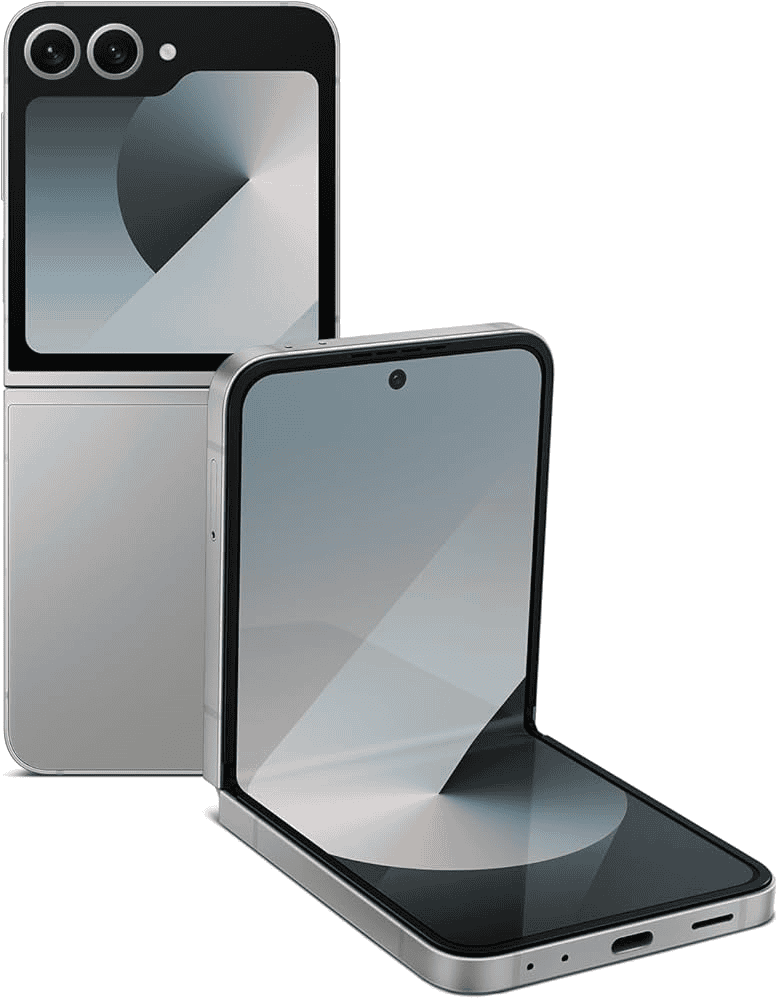
- Display: 6.7-inch foldable Dynamic AMOLED display with 120Hz refresh rate.
- Processor: Qualcomm Snapdragon 8 Gen 3.
- Camera: Dual rear camera system (12MP main, 12MP ultrawide).
- Software: Android 15 with Samsung’s One UI.
- Special Features: Compact and stylish design, Flex Mode for hands-free use, improved cover screen.
Comparison Table
| Feature | Google Pixel 9 Pro Fold | Samsung Galaxy Z Fold6 | Samsung Galaxy Z Flip6 |
|---|---|---|---|
| Display Size | 7.6 inches | 7.6 inches | 6.7 inches |
| Processor | Google Tensor G3 | Snapdragon 8 Gen 3 | Snapdragon 8 Gen 3 |
| Camera | Triple | Triple | Dual |
| Software | Android 15 | Android 15 | Android 15 |
| Special Feature | Camera, Software | S Pen, Multitasking | Compact, Flex Mode |
Choosing the Right Foldable Phone
The best foldable phone for you depends on your needs and preferences.
- Google Pixel 9 Pro Fold: Ideal for users who prioritize camera quality and a clean software experience.
- Samsung Galaxy Z Fold6: Best for users who want a powerful multitasking device with S Pen support.
- Samsung Galaxy Z Flip6: Perfect for those who value a compact and stylish design with unique features like Flex Mode.
Factors to Consider When Buying a Foldable Phone
Beyond the specific models, several factors are crucial when choosing a foldable phone.
- Durability: Foldable phones have a hinge mechanism that can be a point of vulnerability. Look for phones with durable hinges and screen protection.
- Software Optimization: The software should be optimized for the foldable form factor, offering seamless transitions between folded and unfolded modes.
- App Compatibility: Ensure your frequently used apps are compatible with the foldable screen and offer a good user experience.
- Price: Foldable phones are generally more expensive than traditional smartphones. Set a budget and consider the features you value most.
- Battery Life: Foldable phones have larger screens, which can consume more power. Consider battery capacity and power efficiency.
Will Apple Release a Foldable Phone in 2025?
Although Apple has not officially announced a foldable phone, rumors and industry speculation indicate that the company is actively developing foldable technology. However, it is unlikely that we will see an Apple foldable phone in 2025. Apple is known for its meticulous approach to product development, often entering new markets only when they have a well-refined and innovative product to offer. While other manufacturers have already released foldable phones, Apple seems to be taking its time to perfect the technology and ensure a seamless user experience.
Current predictions suggest a potential release of Apple’s foldable phone in 2026. This timeframe would allow Apple to address challenges associated with foldable technology, such as durability, software optimization, and app compatibility. When Apple ultimately releases its foldable phone, it is expected to generate significant excitement and could potentially reshape the foldable phone market. Given Apple’s focus on user experience and design, along with its strong brand loyalty, their foldable phone could become a highly sought-after device.
Key Takeaways
- Foldable phones offer versatile functionality with expandable screens
- Manufacturers are continuously improving durability and design
- The market offers diverse options to suit different user preferences
Best Foldable Phone For 2025
Foldable phones are revolutionizing the mobile landscape, offering a unique blend of portability and expansive screens. The Google Pixel 9 Pro Fold and Samsung’s Galaxy Z Fold6 and Z Flip6 are leading the charge with innovative features and cutting-edge technology. When choosing a foldable phone, consider factors like display quality, camera capabilities, software experience, and overall design. Evaluate your needs and preferences to find the perfect foldable phone that fits your lifestyle.
Samsung Galaxy Z Fold 6
The Samsung Galaxy Z Fold 6 stands out as a premium foldable phone. It boasts a wider cover screen and improved durability. The device features excellent cameras and powerful performance.
Its bright displays enhance the user experience. Samsung offers long-term software support for this model. However, the Z Fold 6 comes with a high price tag. Its charging speeds lag behind some competitors.
Optimal App Transition
Motorola Razr+ (2024)
The Motorola Razr+ (2024) excels in app continuity. Its large outer screen allows users to access apps without unfolding the device. The top-notch display enhances this experience. The phone’s waterproof design adds durability. Users find it stylish and user-friendly. Camera quality is average. AI features were limited at launch.
Optimizing Productivity with Foldable Devices
OnePlus Open
The OnePlus Open stands out for its multitasking capabilities. It features two high-quality displays that enhance user productivity. The device’s sleek design complements its powerful hardware.
Users can run multiple apps simultaneously on the large screen. This feature allows for efficient work and entertainment. The OnePlus Open’s interface is intuitive, making app navigation smooth.
Despite its strengths, the device has some drawbacks:
- High price point
- Camera performance lags behind competitors
- Lack of wireless charging
For professionals who prioritize multitasking, these trade-offs may be acceptable. The OnePlus Open’s robust performance and dual-screen functionality make it a strong contender in the foldable phone market.
Top-Rated Clamshell Smartphone
Samsung Galaxy Z Flip 6
The Samsung Galaxy Z Flip 6 stands out as a leading clamshell smartphone. It boasts a vibrant internal display and improved water resistance. The device’s build quality is precise and refined.
Samsung equips this model with excellent cameras. Users benefit from long-term software updates. The cover screen has limited functionality. Charging speeds reach 25W for wired connections.
Top Camera Performance
Google Pixel 9 Pro Fold
The Google Pixel 9 Pro Fold boasts an impressive camera system. It captures sharp, vibrant images in various lighting conditions. The phone’s AI-powered features enhance photo quality and provide useful editing options.
Users can expect excellent results from both the main and selfie cameras. The device offers multiple lenses for versatile shooting. Its folding design adds unique photography possibilities.
While pricey, the Pixel 9 Pro Fold delivers outstanding camera capabilities for mobile photography enthusiasts.
Most Budget-Friendly Options
Motorola Razr (2024)
The Motorola Razr (2024) stands out as an affordable foldable phone option. Its attractive design catches the eye, while the high-quality inner and outer displays offer versatility. Users benefit from extended battery life and water resistance.
Performance falls short of expectations. Camera quality is average. Despite these drawbacks, the Razr (2024) provides a cost-effective entry into foldable technology.
Best Times to Purchase a Folding Phone
Foldable phone releases don’t follow a strict annual schedule. Samsung and Google now unveil new models in July and August. OnePlus may not refresh its foldable until early 2025.
Buyers should focus on features rather than timing. Consider these factors:
- Current model capabilities
- Upcoming rumored improvements
- Personal needs and budget
New foldables often bring incremental upgrades. Waiting for the next release isn’t always necessary. Sales and promotions can offer good value on existing models. Black Friday and holiday seasons may bring discounts.
Watch for announcements from major brands. Pre-orders sometimes come with bonuses. Patient shoppers might find deals on older models when new ones launch.
Types of Foldable Phones
Foldable phones come in two main designs: book-style and clamshell. Book-style foldables have an outer display similar to a standard smartphone and unfold to reveal a larger, tablet-like screen inside. The Samsung Galaxy Z Fold 6 and Google Pixel 9 Pro Fold are examples of this type.
Clamshell foldables, on the other hand, resemble traditional flip phones. They have a small external screen and open to reveal a full-sized smartphone display. The Samsung Galaxy Z Flip 6 and Motorola Razr+ fall into this category.
These two designs offer distinct user experiences. Book-style foldables provide a larger screen for multitasking and productivity, while clamshell models offer a compact form factor that easily fits in pockets. The choice between them depends on individual needs and preferences.
How Strong Are Folding Phones?
Folding phones face unique durability challenges due to their hinges. These moving parts create potential weak spots. Samsung’s Z Fold 6 and Z Flip 6 can reportedly handle 200,000 folds. This translates to about 100 daily folds for over 5 years. Motorola claims its Razr+ can withstand twice as many folds at 400,000.
Screen protection varies between external and internal displays. Outer screens often use Gorilla Glass for scratch and drop resistance. Inner flexible screens can’t use the same hardened materials. Instead, they typically employ a secondary layer of protective folding glass.
Water and dust resistance pose difficulties for foldables. No model has achieved a full IP68 rating yet. The Moto Razr+ boasts an IPX8 rating, making it water-resistant but not dust-proof. Samsung’s Galaxy Z Flip 6 has an IP48 rating, protecting against particles larger than 1mm and submersion.
Foldable phone durability at a glance:
| Feature | Status |
|---|---|
| Hinge strength | Improving, but still a potential weakness |
| Screen protection | External: Good, Internal: Limited |
| Water resistance | Some models IPX8 rated |
| Dust resistance | Generally poor |
Battery life in foldables has improved over time. Larger form factors allow for bigger batteries. However, powering two screens can drain power faster than traditional smartphones.
Key considerations for foldable phone durability:
- Careful handling of the hinge mechanism
- Using protective cases designed for foldables
- Avoiding exposure to dust and debris
- Being mindful of water exposure, even with water-resistant models
As technology advances, expect future foldables to offer enhanced durability and resistance to environmental factors.
How Large Are Folding Phones?
Folding phones come in various sizes and shapes. Book-style foldables open into tablet-sized devices, while flip-style models unfold to resemble standard smartphones.
The thickness of folding phones has decreased over time. Current models like the Galaxy Z Fold 6 measure 0.48 inches when closed, only slightly thicker than non-folding flagships. When unfolded, its thickness reduces to 0.22 inches.
Clamshell foldables tend to be thicker when closed. The Z Flip 6, for example, is 0.60 inches thick when folded. However, it’s compact in other dimensions:
- Width: 2.8 inches
- Height: 3.4 inches
- Weight: 6.6 ounces
These measurements make clamshell foldables highly portable when closed.
Display size varies significantly between folded and unfolded states. Foldables typically feature two screens:
- Cover screen: Smaller display visible when device is closed
- Main display: Larger screen revealed when unfolded
Many foldables now offer 120Hz refresh rates on both displays, enhancing smoothness and responsiveness.
The design of foldable phones continues to evolve. Manufacturers strive to reduce thickness and weight while improving durability. Recent models showcase sleeker profiles and more refined hinge mechanisms.
Foldable phones offer unique advantages in terms of screen real estate and portability. Users can enjoy a tablet-like experience for media consumption or multitasking, then fold the device for easy pocket storage.
Using a Foldable Phone: A Unique Experience
Foldable phones offer a distinctive user experience compared to traditional smartphones. These devices provide versatility with their dual-screen design, allowing users to interact with them in both closed and open states.
Top Picks from Tech Experts
Foldable phones come in various designs, each with its own strengths. Here are some top recommendations:
Samsung Galaxy Z Fold 7
- Large inner display: 7.6 inches
- Outer screen: 6.2 inches
- Multitasking capabilities: Run up to 3 apps simultaneously
Motorola Razr+
- Compact clamshell design
- Large outer display: Runs most apps
- Flexible selfie options
Google Pixel Fold
- Tablet-like inner screen: 7.6 inches
- Outer display: 5.8 inches
- Google’s AI features integrated
These devices showcase different approaches to foldable technology. Samsung focuses on productivity with its book-style fold, while Motorola emphasizes portability with its clamshell design. Google brings its AI expertise to the foldable market.
Foldable phones run on Android, which adapts to various screen sizes. However, not all apps are optimized for foldable displays yet. Manufacturers tackle this challenge differently:
- Motorola allows most apps on the outer screen but warns of potential issues
- Samsung limits app access on the external display
The inner screens of book-style foldables face similar challenges as Android tablets. To address this, manufacturers offer enhanced multitasking features:
- Google Pixel Fold: Two apps side-by-side plus a floating video window
- Samsung Galaxy Z Fold: Up to three tiled apps, video overlay, and pop-up windows
App continuity varies between devices. Some phones automatically continue apps from the outer to the inner screen when opened. Others require user settings to enable this feature.
Foldable phones introduce new ways to take photos. Users can leverage both screens for different camera functions:
- Use the main camera for high-quality selfies with the outer screen as a viewfinder
- Capture wide-angle group shots using the unfolded inner display
AI features are becoming more prominent in foldable devices. These may include:
- Smart photo editing tools
- Voice-to-text transcription
- Real-time language translation
As the technology evolves, users can expect more AI-powered features tailored for foldable form factors. These innovations aim to enhance productivity and creativity on these unique devices.
The Visible Line on Foldable Screens
Foldable phones have a noticeable line where the screen bends. This line is most clear when the screen is off or viewed from an angle. During normal use, the line is less distracting. Users can easily focus on apps, games, and videos without much bother.
New models have better screens and hinges. These improvements make the line less obvious and more durable. The Samsung Galaxy Z Fold 6 is a good example of this progress. Its design shows how far foldable technology has come.
While the line still exists, it’s becoming less of an issue. As technology advances, we can expect even smoother screens in future foldable phones.
The Future of Foldable Smartphones
Foldable phones are set to evolve rapidly in the coming years. Manufacturers are working on thinner, more durable designs with smaller bezels. These devices will likely pack more powerful processors, such as the Snapdragon 8 Gen 3, into sleeker frames.
Samsung may introduce a slimmer Galaxy Z Fold model in late 2024. The company often brings high-end features to more affordable devices, so a budget-friendly Z Fold FE or Z Flip FE could be on the horizon.
New foldable designs are emerging:
- Tri-fold devices with 10-inch displays (TCL and Tecno concepts)
- Book-style foldables resembling digital handbags (Honor V Purse)
- Rollable screens that expand from compact forms
These innovations aim to offer larger screens in pocket-sized packages. However, many remain in the concept stage.
Android 14 will likely optimize the software experience for foldables. This could improve app compatibility and multitasking capabilities.
Wireless charging may become standard in future foldable models. This feature would add convenience for users who frequently switch between phone and tablet modes.
Key areas of improvement for foldable phones:
- Durability
- Battery life
- Camera quality
- App optimization
- Affordability
As the technology matures, prices may decrease, making foldables more accessible to a wider audience.
Frequently Asked Questions
Top-Rated Foldable Phones in 2024
Samsung Galaxy Z Fold 6 leads the pack. Google’s Pixel Fold and OnePlus Open follow closely. These devices offer large screens and improved durability. Motorola Razr+ stands out in the flip phone category.
Improvements in Latest Foldable Phones
Newer models boast stronger hinges and more durable screens. Battery life has increased significantly. Software optimizations enhance multitasking capabilities. Cameras have improved, rivaling traditional smartphones in quality.
Affordable Foldable Phone Options
Motorola Razr (2023 model) is the most budget-friendly option. It often sells at discounted prices. Some older Samsung models are available at reduced costs. Watch for sales and carrier promotions for better deals.
Key Factors in Choosing a Foldable Phone
Consider:
- Screen size and quality
- Battery life
- Processor speed
- Camera capabilities
- Software features
- Price and warranty
Durability Comparison: Foldables vs Traditional Phones
Recent foldables are more robust than early versions. They now resist dust and water better. Screens are less prone to scratching. However, they still require more care than traditional phones. Protective cases are highly recommended.
Most Reliable Foldable Phone Manufacturers
Samsung leads in reliability and market experience. Google and OnePlus have entered with strong offerings. Motorola has improved significantly with recent models. These brands provide regular software updates and good customer support.

